As zoos, sanctuaries and wildlife facilities, we have an essential role when it comes to educating about sustainability and care for nature. To play this role, we need to take the ultimate care and responsibility for the animals, where behavioural management and behavioural husbandry is a vital cornerstone. We can combine these two when we use old and used materials and convert them into enrichment items to stimulate the natural behaviours of animals we care for. When we do not care for cosmetic designs, there opens a whole new world for enriching possibilities. Let us take a deeper dive into the potential of recycled enrichment.
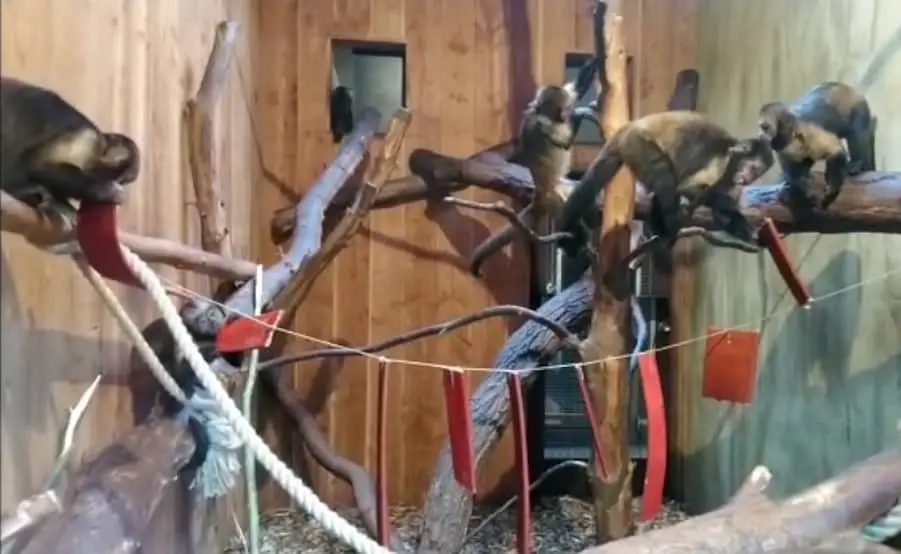
Recycled enrichment is defined as an enrichment item build or converted from used materials to stimulate natural behaviours and mental activities.
Why recycle materials for enrichment items?
Enrichment items can be acquired from many resources. There are many devices available from commercial vendors. We can also use natural material to build our enrichment. We can create an enrichment device from newly acquired materials to fulfil our aim. But another way is to make enrichment devices from used materials. Why recycle materials for enrichment?
Firstly, the reuse of materials is very cheap or often free. When the facility has limited (financial) resources, recycled enrichment is really cheap to make. When you take a walk at your facility, there are probably many materials lying around waiting to be disposed of. Old tires, barrels, used wooden beams, metal or wooden boxes, a wooden spool, mesh or old fences. It is a haven to create new enrichment. And what about packing materials of delivered animal or human food (crates, cans)?
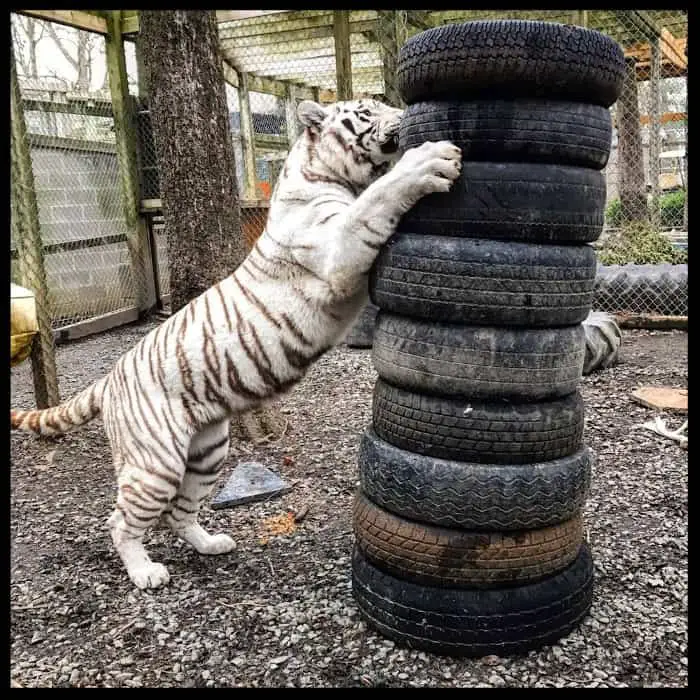
Instead of buying new materials or buying fabricated enrichment, it is far more sustainable to reuse materials to build your enrichment device from. Trash, junk and used materials get a new purpose and don’t have to disposed of anymore. The recycled materials get a second life sort of speak. Of course, some materials have a refund, and in contract to suppliers, we need to return these materials.
Besides, reuse of materials creates a new arsenal of materials available to create the various enrichment devices needed to practice good behavioural husbandry. I have mentioned it often enough that it is important to create a certain level of variety and complexity in your enrichment efforts.
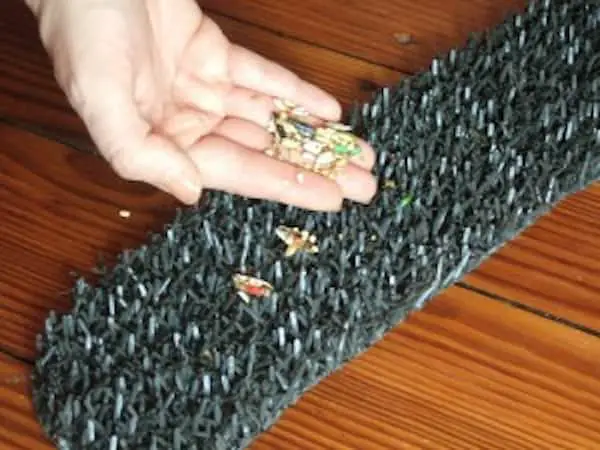
What do you need to consider using recycled enrichment?
Most important to consider is the safety of the animals when reusing materials for enrichment purposes. Auto dealers keep considerable amounts of oils in large barrels. These barrels are loved by many larger felid species or species of hoofed mammals. But these barrels need substantial cleaning before they can be used as enrichment. Also, consider that when these barrels are damaged that the edges can be pretty sharp. When you reuse wooden beams in your enrichment, always check for old rusty nails and screws where animals can wound themself. And what about auto tires? When animals chew of rubbers pieces is not healthy to digest and serious possibility for choking. Not to mention that animals can be trapped within a tire. Confining themself in reused bottle crates will not be the first or last time it occurs, so keep it in mind. When implementing recycled enrichment, you have to make serious safety consideration and need to monitor if it is used as intended. Always make a check that the animals cannot:
- Entrap themself or body parts into the enrichment device;
- Get the enrichment device trapped in the mouth;
- Hang themself onto the enrichment device;
- Ingest or choke themself from (pieces of) the enrichment device;
- Cut or wound themself on the enrichment device;
- Not cause disease, or is toxic or irritating;
- Use the enrichment device to escape from the enclosure.
The safety of the animals should always be considered when making changes to the environment and the enclosure.
Another consideration to be made is the cosmetic looks of the enrichment. Some zoos, institutions and facilities do not like the view of ‘junk/trash’ in the enclosure. It can be the opinion that it disturbs the view or stimulate that it is not a problem to put visitors trash on the ground. Another often called argument is that zookeepers or caregivers receive many calls that trash has fallen into the enclosure, and not realizing it is on purpose as an enrichment effort. But on the contrary, when you openly and effectively communicating in what setting and in what form you use materials for enrichment, it can be very educating. It can be a good starting point about educating on sustainability and recycling. Maybe you can go a step further and actively ask certain materials to use as recycled enrichment.
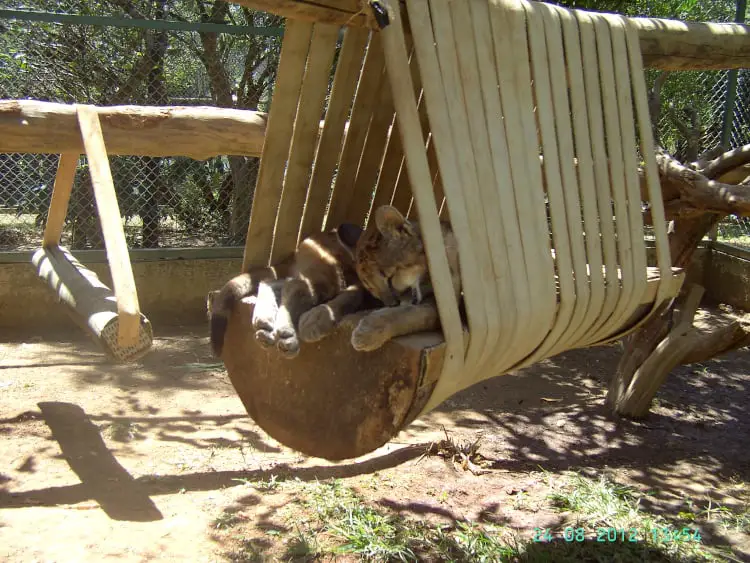
How to get ideas for recycled enrichment
There are many examples of recycled enrichment. When you search for new enrichment ideas, many ideas consist of materials reused for enrichment purposes. To find new enrichment ideas, you have to check the article ‘How I Get New Enrichment Ideas‘. Another well-written enrichment story about this principle is made by Disney’s Animals, Science and Environment Animal Enrichment Program: ‘Repurposing for enrichment‘. But as already said before, there are many more ideas than is mentioned in this article. I can recommend you to check out our Pinterest Environmental Enrichment Ideas board as a starting point to get some inspiration! Here you can find many enrichment ideas that are made from repurposing items into valuable enrichment devices.
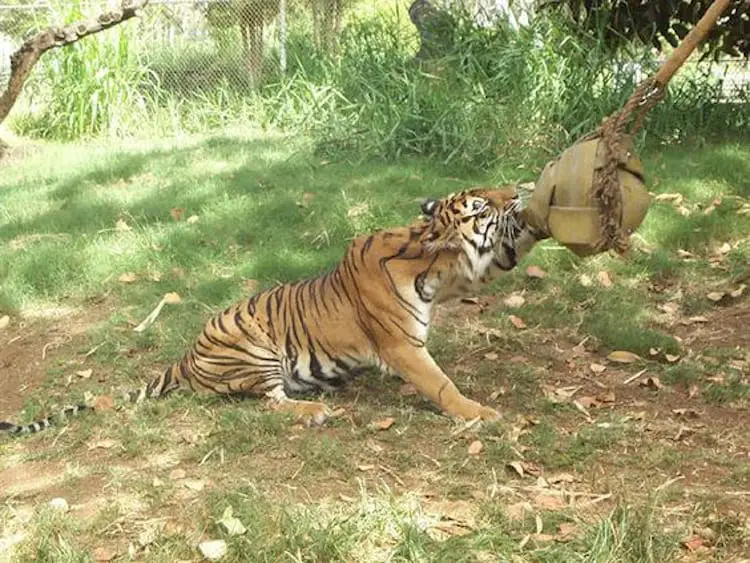
Ready to convert useless junk into useful enrichment?
So, are you ready to convert junk and trash of people into great and innovative enrichment items for animals? I hope this will inspire you to create new devices to make to animals’ environment more stimulating and more complex. And more important, that you can look beyond the trash and junk to see the potential for enrichment. I am always curious about new enrichment devices. So have you developed a great enrichment device with recycled materials, please let me know in the comments below or send me a message at info@zoosnippets.com so I can share it with the community!
Share this page!